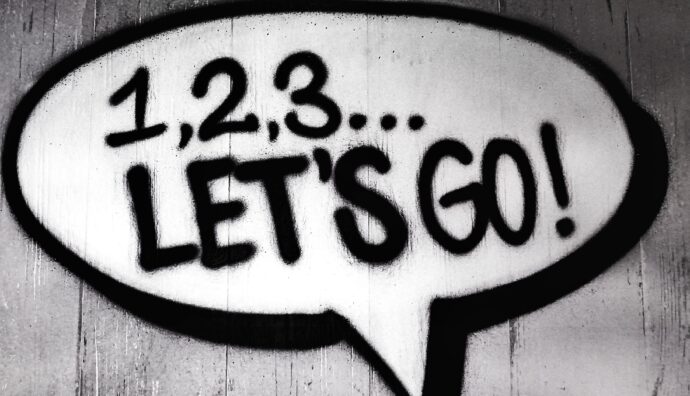Can intuition be trained?
Can the rationality -that gives structure to technical training- support intuition, which is not rational and logical?
In Japanese, intuition is chokkan and is represented by two kanji that have many things in common with practitioners of Martial Arts, especially Aikido: 直感.
The first is choku, 直, which means direct, immediate. Like choku tsuki, the first of the twenty jo-suburi, which becomes direct and immediate after just a few thousand repetitions…
In the second kanji, kan, (感, feeling) there are elements with which anyone who attends a Dojo is somewhat familiar. In its components we see the traits – and 口, which are the components of the Aikido’s kanji ai (合).
On the right we find the inevitable halberd (戈) which we find, for instance, in writings such as bushido (武士道 ) or takemusu Aiki (武産合氣).
At the bottom of the kanji we find kokoro (心), the heart.
By blending all these components, the meaning of feeling emerges. Who wouldn’t think of this term by combining a halberd, a heart, a mouth and some other graphic sign?
A direct, immediate feeling: this is what intuition is.
Common experience teaches that not all intuitions are happy. And that sometimes we make some big mistakes.
On the other hand, very often the most beautiful achievements derive from a series of (rational) actions that have their origin in an intuition, in a feeling so precise that it was almost impossible not to obey it, even if it was not that logical.
Using a martial discipline means having the privilege of training the choku part, everything that is, in a way, direct, straight.
The attacks – the grabs, the slashes and the percussions – are codified. So are the techniques. There is a didactic methodology that prepares the practitioner to receive the energy of his partner.
In the early days, when one is a beginner because he/she has just started or is studying new forms, strange phenomena occur.
For example, it happens that, in a completely intuitive way, when we perform some complex techniques, that belong to the repertoire of very advanced ranks, we can make it, than simpler techniques, which, in converse, completely block us.
It also happens, sometimes, that while we receive other techniques, our body collapses to the ground well before our partner leads us; other times we freeze in static positions despite powerful joint levers telling us that it is better to give in. Other times, our body moves without any impulse received and puts itself in a state of leverage, with the result that we literally hurt ourselves. Still sometime, finally, we are convinced that, for example, we have the right foot forth, when in fact it is the opposite.
It’s a paradox: you have to move on from technique to restore the capability for free, direct, intuitive movement.
Frankly speaking, freedom cannot exist without awareness: this is demonstrated by the condition of the society in which we live.
The same is true in a personal growth path supported by a discipline. We start from a formless state, with the body not knowing what to do or how to behave.
Gradually formal training builds a structure with points in which growing awareness shows the possibility or impossibility of completing or receiving a technique. It is that time of apprenticeship in which gaps in awareness emerge even in the form of small injuries. Everyone would happily grow without it but sometimes a bruise is the ultimate teacher for learning how to move the body.
We finally arrive at a turning point. Very often, after years of practice, we slowly slip into technical automatism. From the outside it may seem wonderful and even with the height of spontaneity, when in fact it is the opposite.
Automatism is the control of a very branched tree of if…then. In some ways it is the product that certifies the quality of a teaching methodology, which manages to train those who dedicate themselves to it almost to perfection.
But is this what we want? Being tamed?
99.9% of us will be convinced that we do not belong to this category. Problems and defects always belong to others.
Trained intuition is not based on “if…then” but on “when“. It is a kind of awareness trained to keep perpetually alert, ready for action. A relaxed vigilance (zanshin) listening to what is there: the present that flows.
Intuitive spontaneity thus creates forms through relationship (takemusu Aiki). This is what you see when there are two very experienced practitioners communicating through their exchanges.
And this is what all the great masters testify: in the end – but only in the end – the form is no longer important.
How do we get there?
Training with patience and learning that when my partner holds out his hand in a certain way, I have to take it like this and not like that.
That when I receive an imbalance and a stress I have to let go, and so on.
Will this process be successful to bear fruit in the training of intuition even “outside” the tatami?
We are convinced it will: after all, if we agree to remap our muscular habits, why not try to remap our attitudes and habits?
Disclaimer Picture by SevenStorm from Pexels

